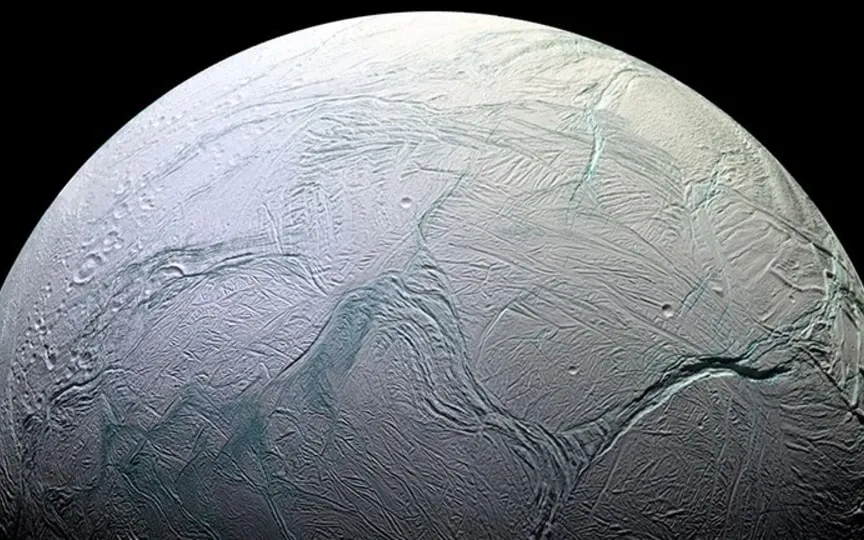Possible Evidence of Extraterrestrial Life Discovered on Saturn’s Moon Enceladus
An essential finding has been made by scientists who analyzed data from the Cassini spacecraft, a probe dispatched by NASA, regarding one of Saturn’s frigid moons. They have detected significant amounts of phosphorus, a vital element for all life processes on our planet.
This phosphorus was found in ice crystals beneath the surface of Enceladus, a moon of Saturn that has an ocean beneath its icy exterior.
The discovery of phosphorus is a major breakthrough for the possibility of alien life on this moon. Scientists had already discovered six other chemical elements that are essential for all living things: carbon, oxygen, hydrogen, nitrogen, and sulfur. The missing piece was phosphorus, and now they have found it.
The Cassini spacecraft was the first to orbit Saturn and collected data during its mission from 2004 to 2017. A group of international researchers led by Germany analyzed more than a decade of data and published their findings in the journal Nature. NASA’s Jet Propulsion Laboratory, which built the Cassini probe, also announced the discovery.
Professor Frank Postberg of the Free University of Berlin, who led the research team analyzing the data, explained that it took a long time to make this discovery. The data had been available on NASA’s servers for 15 years, but the sheer volume made it challenging to analyze while the mission was underway.
After receiving funding from the European Research Council, the team performed a more extensive analysis of the data. They found nine ice grains with a significant signature of phosphorus after three years of research.
Mikhail Zolotov, a professor of planetary geochemistry at Arizona State University, emphasized the significance of this discovery. Phosphorus compounds are crucial to Earth’s biological productivity, and their presence increases the chances of life on the other outer ice-covered planets of the Solar System.
However, gathering evidence from other oceanic moons will take nearly a decade. The European Space Agency’s Jupiter Icy Moons Explorer (JUICE) mission will study Jupiter’s icy moons Europa, Callisto and Ganymede over eight years. In addition, NASA plans to launch the Europa Clipper in October next year, and it is expected to arrive in Jupiter’s moon system in 2030.




